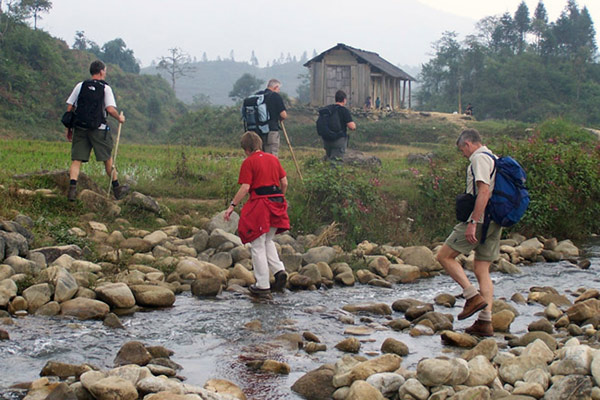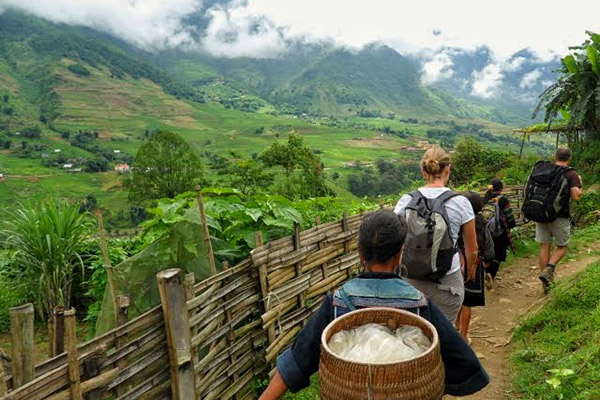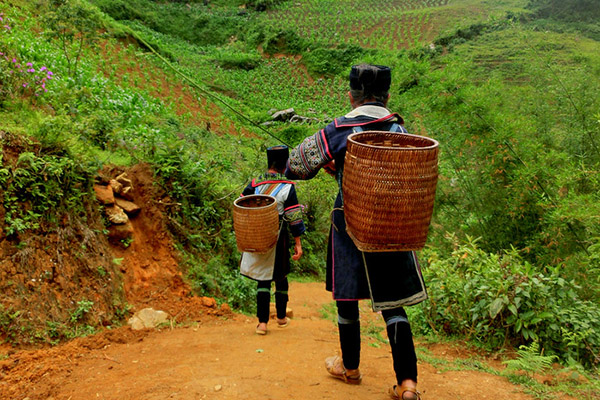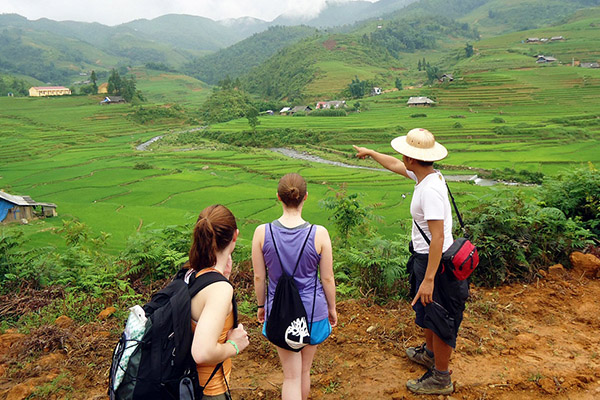Sapa is the best choice for travelers who want to have a trekking in Vietnam. This town is a beautiful mountainous town and home to a great diversity of ethnic minority people. You pass through multiple villages and are graciously welcomed by cultural minorities who love to share their traditional customs and way of life with visitors. Coming here, you will grace the incredibly picturesque, enjoy the cool mountain air was refreshing so it was just great to be out exploring nature. Before getting the awesome destination in Vietnam, you can read this guide for traveling 3 days in Sapa valley trekking.
Some suggestions for you in the journey
To get the perfect trip to Sapa, you should prepare some necessary items. Firstly, you need to search for the weather forecast to bring the suitable clothes. The guide is not a carrier, so only bring what is absolutely necessary to you. Remember, your bag will be heavy when you wear trekking. It was a bit of an open-concept with lots of mattresses and a mosquito net over top, but you had clean bed sheets, warm blankets for the night, and fresh towels. Secondly, during the trekking, you will be thirsty, so you need lots of water. It’s really horrible to realize that you just drank the last drop of your water and there are still another two hours of walking ahead. To not die of thirst, take plenty of water with you.
Otherwise, you can bring a little bit fast food like candy, snacks and so on to provide the energy during trekking process. Thirdly, we believe that you want to keep the memory during that time so you must have devices. It ensures that the scenery in Sapa and the surrounding region is stunning so you need to keep the full battery in order to take photograph. You are free to take lots of photo breaks every time. Especially, the best moment should be gained when you came over a hill or reached yet another lookout point. Additionally, you also bring the mobile phone, traveling notebook and camera to search more clearly the knowledge anytime you want.
On the first day
You will need two hours to walk through Cat Cat Village locating near the bottom of the deep valley right at the foot of Fansipan Peak. Cat Cat village is the village of ethnic groups which attracts tourists from all over the world. This is a village of Black H’mong people where you can discover many interesting facts about their daily life as well as culture and architecture. Actually, if you want to get the traditional handicrafts, this is also a good opportunity. Cat Cat village makes some handicrafts right from the craftsmen such as twisting flax and weaving fabric.
Y Linh Ho village is a commune of Black H’mong where composed by many small hamlets scattering on the very tough mountain terrain with high and steep mountains. They wear the dark clothing and navy dyed with indigo which often seen in the hands of older H’mong women. Their houses are built on their farmland and on the mainly cultivate corn, dry rice on the steep hillsides. As a result, the only way to get to the village is on foot on the road.
Nearly to two above villages, Sin Chai is a special village. The Red Dao ethnic people live in there. You can wear their clothes once a time in order to take the photo as they are very beautiful with distinctive silver jeweler and red turban. Coming to Sin Chai village, visitors can experience cultural beauty. If you want to more trek, Sin Chai is the next stop place. In this village, local people almost spend the time on the textile weaving and dying. You will be guided how to produce the goods and be explained the names and function of the local flora. There will be the opportunity to participate in the village community, there will be a traditional sporting activity and tree planting. But before catching up Sin Chai Village, you must cross 2 kilometers from Sapa Townlet and on the way to Sin Chai Village, to learn about the life of Black Hmong people.
On the second day
In the morning, you will enjoy the breakfast in the fresh atmosphere. After finishing, you will be transferred to Lao Chai village. And take some minutes for short trekking. Then you meet people who live in Lao Chai village. Nearly Lao Chai village is Ta Van village where is the house of Dzay ethnic minority hill tribe lives. This place is where many Vietnam ethnic minority groups gathering and living for a long time in harmony with each other. When visiting the village, tourists can admire natural landscapes here, and experience homestay service, as well as enjoy traditional food of this land. This provides a great opportunity to share their customs and home life. One suggestion for you has lunch at the local house to enjoy the traditional foods in there.
You continue to forward the beautiful terraced rice fields and a bamboo forest. Approaching Giang Ta Chai village which is home to Red Zao, Hmong and Dzay minority. It ensures that you will be able to enjoy the genuine friendliness and hospitality of the villages and have a chance to speak with the locals. We will cross an old timber and rope suspension footbridge. After taking a rest nearby a waterfall to refresh, you will start climbing uphill to a road, the car and your driver are ready for your journey back to Sapa.
On the third day
Another destination in Sapa valley trekking is Muong Hoa Valley. This place is very famous for the breathtaking scenery and is the largest farmland for rice growing in SaPa. It is far from town about 14 kilometers. Muong Hoa valley is a place accumulating strange carved stones, along with the mountains. From the peak of the mountain covered by endless forest, rainwater follows dozens of streams downhill to the floor forming the Muong Hoa. You will admire the rice fields of the ethnic minority people of H’Mong, Dao, and many others.
Muong Hoa stream flows along the Muong Hoa valley, extends throughout the Lao Chai, Ta Van, Hau Thao,… It is a place, along with the mountains is a strange carved stone. Muong Hoa has mysterious graphics by the diversify of 159 stones. However, the popularity of ancient stones with beautiful carving is located in Ban Pho. This place was researched by scientists of Vietnam, Russia,… Especially, there have various of strange shape. Most scientists evaluated that it is the great heritage of mankind.
For long years from 2300 to 3000 years, people found many special points. For distance, the mysterious graphics of the Sapa’s ancient stones can be of many ethnic groups living in different ages. They try to keep the historical things and take a primitive picture to express many different cultures. They can be either Dao or Mong.
While trekking to Muong Hoa valley, you have a chance to take photos and sight Sapa’s views. This valley has terraced fields which is the most beautiful terraced fields of Sapa. Then passing the suspension bridge, you continue to discover the village of weaving and dyeing cloth of the Hmong. Just enjoy the breathtaking landscapes in the magnificent Muong Hoa valley, you will also visit small and isolated hamlets and villages meet the Black H’mong, Zay, and Red Zao at home and at work.
The final trekking place in Sapa is Ham Rong mountain which is considered as one of the potential spots for tourism and it plays the important role in the transition of the economic structure of the province. It is an indispensable itinerary for tourists to Sapa. This mountain is home to numerous kinds of flowers and orchard garden. The mountain is famous for the orchid gardens with more than 6000 orchid plants belonging to 194 kinds. Besides, there are a lot of indigenous and exotic flowers grown along the paths like hydrangea, geraniums, ox-eyed daisy and cherry, Lily blossom. Not only that, there are many fruits like peach, plum, and pear in here. You can pick and enjoy the delicious tastes. You will stand in the fog of H’Mong minority change this place into a heaven on the earth.
Finishing the awesome Sapa valley trekking in 3 days with many interesting in several villages, the valley, and mountain, you should keep carefully the valuable pictures.




